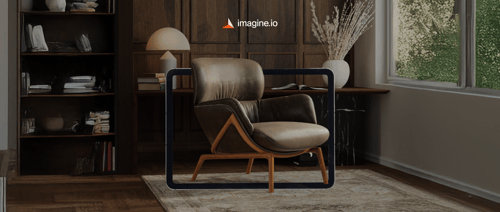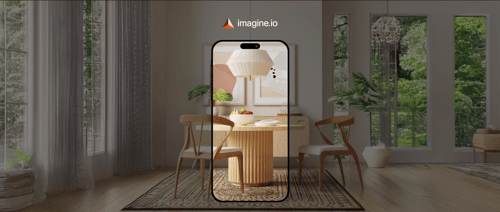Quick Listen:
Imagine a designer sketching a new chair in a bustling studio, and within hours, a client halfway across the world is exploring it in a virtual showroom, adjusting its fabric and angles with a swipe. No physical prototypes, no costly shipping delays just a vivid, interactive experience that feels as tangible as the real thing. This is the power of augmented reality (AR) and 3D visualization, technologies that are revolutionizing how industries design, refine, and market products. In an era where speed is paramount, these tools are collapsing timelines and redefining what's possible in sectors from retail to construction. Yet, as adoption surges, significant hurdles remain. What's driving this transformation, and why isn't everyone on board yet?
The virtual reality market, valued at $16.32 billion in 2024, is forecast to reach $123.06 billion by 2032, with a compound annual growth rate (CAGR) of 28.9%. Similarly, the immersive technology market, which includes AR and VR, stood at $40.88 billion in 2024 and is projected to hit $169.88 billion by 2030, growing at a CAGR of 27.9%. These figures underscore a profound shift, fueled by breakthroughs in real-time rendering, mobile device integration, and a growing demand for experiences that seamlessly blend physical and digital realms.
Accelerating Design with Virtual Tools
The traditional design process was often a grind. Sketches led to prototypes, which could take weeks to build and ship, only to be scrapped after feedback revealed flaws. AR and 3D visualization have upended this model. Platforms like imagine.io enable businesses to craft photorealistic digital models that can be modified instantly, viewed through VR headsets, or superimposed onto real-world environments via smartphones. The outcome is a streamlined cycle: quicker decisions, fewer errors, and products that reach the market faster.
In retail, the virtual tour market, worth $0.96 billion in 2023, is expected to grow to $17.88 billion by 2035, with a CAGR of 27.9%. Retailers are leveraging AR to let customers virtually “try on” clothing or see how furniture fits in their homes, reducing returns and driving sales. The COVID-19 pandemic, which halted in-person shopping, accelerated this trend, with virtual tours enabling consumers to explore stores or properties remotely. By replicating details like a fabric's weave or a room's lighting, these tools have become essential for delivering immersive experiences.
Manufacturing is equally transformed. Engineers can now inspect intricate machinery in virtual form before production begins, spotting issues that might cost millions to fix later. A 2020 study on AR/VR in construction highlights that the architecture, engineering, and construction (AEC) sector has been slow to embrace these technologies due to unclear cost-benefit data. Yet, the potential to save time and resources is immense. Picture a virtual factory where global teams test a prototype in real time, collaborating across borders without leaving their desks.
Tangible Impact Across Industries
The real-world applications are striking. In e-commerce, brands like IKEA use AR apps to let customers visualize furniture in their homes, tweaking designs with a tap. This interactivity isn't just novel it's boosting conversions. By enabling confident purchases, AR reduces returns and builds trust. The data backs this up: immersive experiences are reshaping how consumers engage with products.
In architecture, AR allows clients to “walk through” unbuilt spaces, from homes to skyscrapers, adjusting layouts in real time. The AEC study notes that while high costs deter smaller firms, the ability to align designs with client visions before construction starts is transformative. This technology bridges the gap between imagination and reality, saving time and preventing costly revisions.
Market research is also evolving. Companies use AR to test product concepts, collecting instant consumer feedback on designs or packaging. A 2025 study on UX design emphasizes that virtual experiences prioritize usability and engagement, ensuring products hit the mark before launch. This rapid iteration is cutting development timelines by months, giving businesses a critical edge in competitive markets.
Barriers to Adoption
Despite the hype, AR and 3D visualization face significant obstacles. Hardware constraints, such as the processing power needed for smooth rendering, can lead to laggy experiences on older devices. Integrating AR tools with existing design software often demands expensive overhauls, creating friction for companies. The AEC study points out that industries hesitate to adopt AR/VR without clear evidence of profitability, a gap that slows progress, particularly for smaller players.
User adoption is another challenge. Not everyone is ready to navigate AR apps or don VR headsets, especially older consumers. Privacy and security concerns add complexity. A 2022 survey on VR privacy warns that as virtual reality grows, so do risks like unauthorized data tracking or exposure of sensitive designs. Protecting users in these immersive spaces is critical to building trust.
Cost remains the biggest hurdle. The AR/VR market, valued at $44.68 billion in 2024, is projected to reach $300 billion by 2035, with a CAGR of 18.9%. However, the initial investment high-end headsets, software, and training can be prohibitive. A single VR headset can cost hundreds, and that's before accounting for the expertise needed to deploy these systems effectively.
The Rewards of Going Virtual
The benefits, though, are compelling. Virtual prototypes eliminate the need for physical models, saving millions and accelerating market entry. A single 3D model can be shared globally, edited in real time, and presented to clients without leaving the cloud. This fosters collaboration, uniting designers, engineers, and marketers in virtual workspaces, regardless of location.
For consumers, AR delivers personalized experiences. The VR headsets market, valued at $10 billion in 2024, is set to reach $60 billion by 2035, with a CAGR of 16.11%, driven by demand in gaming, education, and remote work. From gamers exploring virtual worlds to students studying 3D models, these tools make interactions richer and more accessible.
A Glimpse into the Future
What lies ahead? Experts predict AR and 3D visualization will become more intuitive, with AI tools anticipating design flaws or suggesting improvements autonomously. The UX design study envisions virtual experiences that feel as natural as physical ones, with accessibility improvements broadening their reach. As costs decline and technology advances, adoption will surge.
Businesses must act now to stay competitive. Begin modestly test AR in a single product line or use 3D models for internal reviews. The immersive technology market, led by North America's 41.8% revenue share in 2024, signals a global appetite for these tools. Hesitation risks falling behind in a market that rewards speed and innovation.
In an age that demands instant results, AR and 3D visualization are more than technologies they're a new lens for creativity and connection. They empower businesses to turn ideas into reality without delay, delivering experiences that captivate and inspire. The future of design isn't coming it's already here, and it's virtual.
Disclaimer: The above helpful resources content contains personal opinions and experiences. The information provided is for general knowledge and does not constitute professional advice.
You may also be interested in: Visual Ecommerce Solutions – imagine.io
Struggling with expensive, outdated product visuals that slow down your creative process and stunt eCommerce growth? imagine.io's AI-powered platform empowers furniture, home décor, and textile brands to effortlessly produce striking 3D images, immersive videos, AR experiences, and interactive configurators. Cut production costs up to 70%, boost conversions 5X, speed up prototyping, and supercharge your online sales. Ready to elevate your product visuals and captivate customers? Book a demo with imagine.io today!
Powered by flareAI.co




.png?width=500&name=How%20to%20Add%20a%203D%20Product%20Configurator%20to%20Your%20WordPress%20Website%20(Complete%20B2B%20Guide).png)
















%20(1).png?width=500&name=Why%20Exploded%20Mattress%20Views%20Matter%20(And%20How%20to%20Generate%20Them)%20(1).png)
.png?width=500&name=Best%20Shopify%20Product%20Configurator_%20How%20to%20Choose%20the%20Right%20One%20(2).png)
.png?width=500&name=Why%20Exploded%20Mattress%20Views%20Matter%20(And%20How%20to%20Generate%20Them).png)



.png?width=500&name=Best%20Shopify%20Product%20Configurator_%20How%20to%20Choose%20the%20Right%20One%20(1).png)







.png?width=500&name=How%203D%20Rendering%20Can%20Make%20or%20Break%20Your%20Industrial%20Design%20Pitch%20(1).png)








%20with%20Digital%20Twins%20and%203D%20Visualization.png?width=500&name=Optimizing%20Your%20Digital%20Asset%20Management%20(DAM)%20with%20Digital%20Twins%20and%203D%20Visualization.png)




.png?width=500&name=Styling%20Home%20Decor%20for%202025_%20From%20Global%20Influences%20to%20Playful%20Personalization%20(1).png)
